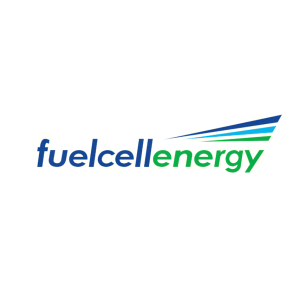Idaho National Laboratory Testing of FuelCell Energy’s Electrolyzer to Show Further Commercialization Opportunity for Nuclear Power Plants
Rhea-AI Summary
FuelCell Energy (FCEL) has begun testing its solid oxide electrolysis cell (SOEC) system at Idaho National Laboratory (INL), marking the largest and first fully integrated electrolyzer tested at the facility. The project, partially funded by a 2020 DOE award, aims to study hydrogen production's role in diversifying nuclear plants' profitability.
The system will produce 150 kilograms of hydrogen daily using 250 kilowatts of nuclear-generated electricity, demonstrating 100% efficiency when utilizing nuclear plant waste heat. This efficiency could reduce clean hydrogen production costs by up to 30%. The electrolyzer's modular design, shipped on two flatbed trucks, offers easy scaling and siting capabilities.
The testing will evaluate real-world applications, including thermal energy usage from nuclear reactors, grid dynamics, and reactor control simulation. The system will also be showcased to global energy industry visitors at INL, with produced hydrogen supporting ongoing research in e-chemical synthesis, turbine co-firing, and vehicle refueling.
Positive
- System achieves 100% electrical efficiency when integrated with nuclear power
- Potential 30% reduction in hydrogen production costs
- Produces 150kg of hydrogen daily from 250kW of electricity
- Modular design allows for easy scaling and installation
Negative
- None.
Insights
The commencement of FuelCell Energy's SOEC testing at INL marks a pivotal development in the commercialization of nuclear-hydrogen integration. The system's distinctive features - 100% electrical efficiency and 150 kg/day hydrogen production capacity - position it as a potential game-changer for nuclear plant economics.
Three key technological advantages stand out: First, the system's ability to utilize nuclear waste heat for achieving 100% efficiency could translate to a 30% reduction in hydrogen production costs. This cost reduction is important for hydrogen market adoption, as current production costs remain a significant barrier to widespread implementation.
Second, the modular design and small footprint (transportable on two flatbed trucks) enable scalable deployment across various nuclear facilities. This flexibility is particularly relevant for integration with advanced small modular reactors (200-500 MW), representing a forward-looking approach to nuclear energy utilization.
Third, the system's capability to switch between electricity and hydrogen production provides nuclear plants with operational flexibility and potential revenue diversification. This dual-mode operation could significantly enhance the economic viability of nuclear facilities, particularly during periods of low electricity demand or prices.
The validation testing at INL carries substantial implications for the broader energy sector:
- Nuclear plant operators gain a pathway to improved asset utilization and profitability
- Grid operators benefit from enhanced flexibility in managing baseload nuclear power
- Industrial hydrogen users could access more cost-competitive clean hydrogen supply
- The hydrogen economy gains a scalable production solution leveraging existing nuclear infrastructure
The successful validation of these capabilities could accelerate the commercial deployment of nuclear-hydrogen systems, potentially reshaping the economics of both nuclear power and clean hydrogen production. The integration with INL's research programs in e-chemical synthesis and hydrogen turbine applications further demonstrates the technology's versatility and potential market impact.
- Largest and first fully integrated electrolyzer to be tested at Idaho National Laboratory.
- Testing to validate
100% electrical efficiency with nuclear integration. - Hydrogen production capabilities show multiple uses of nuclear energy for energy production.
- System can provide critical grid support through production of clean hydrogen at lower cost.
DANBURY, Conn., Feb. 06, 2025 (GLOBE NEWSWIRE) -- FuelCell Energy (NASDAQ:FCEL) announced that its solid oxide electrolysis cell (SOEC) system has begun a testing and validation period at the U.S. Department of Energy’s Idaho National Laboratory (INL), which focuses on innovations in nuclear research, renewable energy systems and security solutions.
The project, funded partially by a 2020 U.S. Department of Energy Office of Nuclear Energy award, will study how hydrogen production operations can help nuclear plants diversify and increase their profitability by switching between electricity production and hydrogen generation. The testing will also look at the potential of advanced small modular reactor designs (200 to 500 MWs in size) paired with FuelCell Energy’s SOEC utility scale electrolzyers.
The testing involves the largest electrolyzer to be studied at INL, and it is expected to show that the technology can reduce the cost of clean hydrogen production by converting
- will produce 150 kilograms of hydrogen per day,
- from 250 kilowatts of nuclear energy-generated electricity,
- simulating the benefits of
100% efficiency when waste heat from the nuclear power plant is used.
Unlike past testing INL has conducted on electrolysis “stacks,” the FuelCell Energy electrolyzer being studied is a fully integrated solid oxide electrolyzer system.
FuelCell Energy President and CEO Jason Few commented, “Pairing FuelCell Energy’s electrolyzer with nuclear plants is an excellent example of the ‘all-of-the-above' energy strategy that is necessary to meet the needs of a strained electric infrastructure.”
“Nuclear energy is a baseload power source that when paired with FuelCell Energy’s electrolyzer can ensure that every kilowatt of power is converted into a usable or stored energy resource. FuelCell Energy's electrolysis platform can enable
What makes FuelCell Energy’s electrolyzer different?
An electrolyzer is a system that performs electrolysis, which is the process of using electricity to split water molecules (H2O) into hydrogen (H2) and oxygen (O2). Hydrogen produced from electrolysis can be stored long term and transported, allowing energy from wind, solar, and nuclear to be available on demand.
FuelCell Energy’s electrolyzer takes in cold water and electricity and then converts it into hydrogen. And when an external source of heat is added, such as heat from a nuclear power plant, the FuelCell Energy electrolyzer can reach
The INL testing will study real world use cases that incorporate the application of thermal energy from a nuclear reactor, grid dynamics and a nuclear reactor control simulator.
Few concluded, “Energy innovation that drives down costs, emissions, and leverages all the above energy sources we have today is smart energy and a win-win. We look forward to the progress of this testing, which we believe can positively contribute to the ongoing development of nuclear and fuel cell hydrogen technologies to create more abundant energy.”
Despite its capacity, the FuelCell Energy electrolyzer occupies a small footprint with a modular design and was shipped to INL from FuelCell Energy’s headquarters in Connecticut on two flatbed trucks. The system is easy to site, replicate, and scale to the customer’s needs.
While at INL, the FuelCell Energy system will be exhibited to members of the global energy industry who visit the facility to learn about nuclear energy’s ability to generate clean electricity. They will have the chance to learn about clean hydrogen production by combining it with FuelCell Energy’s electrolysis platform. Additionally, hydrogen produced by this system will be used for ongoing research at INL in the areas of e-chemical synthesis, hydrogen turbine co-firing for power generation, and heavy-duty vehicle refueling.
About FuelCell Energy
FuelCell Energy, a pioneer in clean energy technology, provides efficient and sustainable power, carbon capture, and hydrogen solutions worldwide. The company’s fuel cells have been in commercial operation for more than 20 years and are able to run on various fuels including natural gas, hydrogen, and biofuel. The company’s installations have a wide variety of applications, including support of the electric grid, distributed baseload power on site for data centers, industrial operations, and major manufacturers. Founded in 1969 in Danbury, Connecticut, FuelCell Energy holds more than 450 patents that enable solutions for today’s energy needs.
Learn more about our groundbreaking technology at fuelcellenergy.com. Learn more about FuelCell Energy’s electrolyzer here.
Investors
ir@fce.com
203.205.2491
Media
kblomquist@fce.com
203.546.5844









